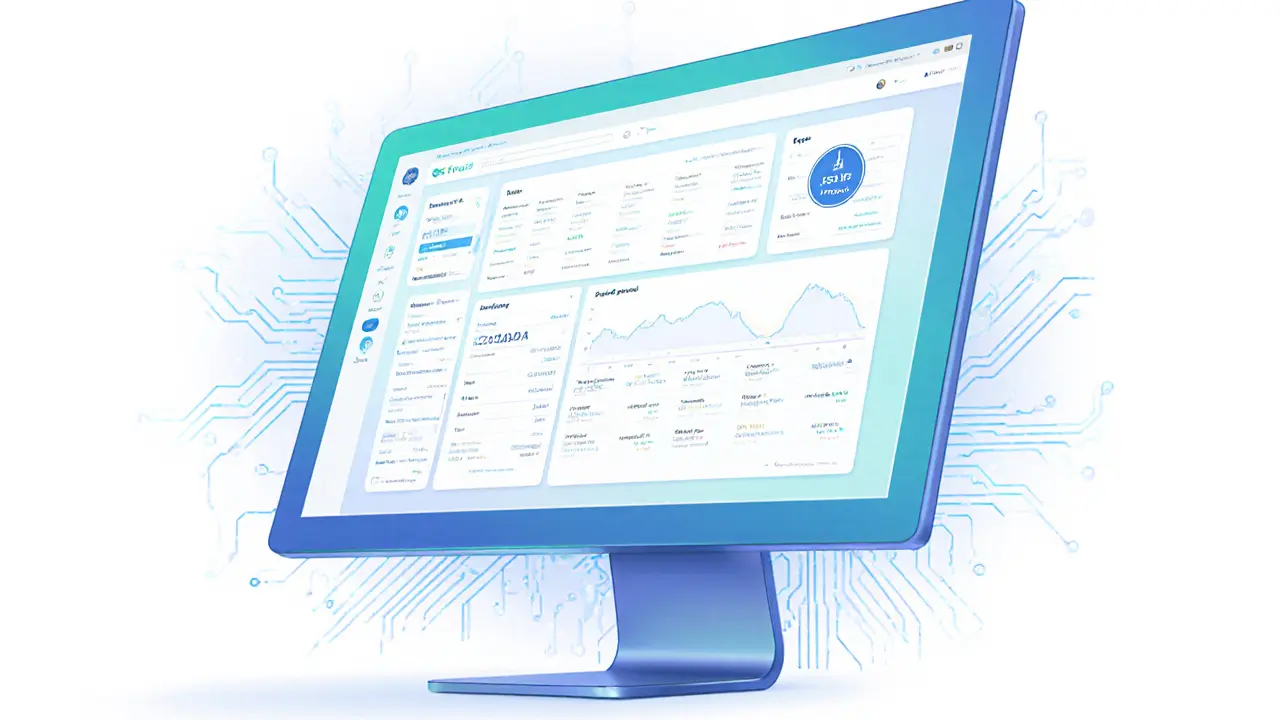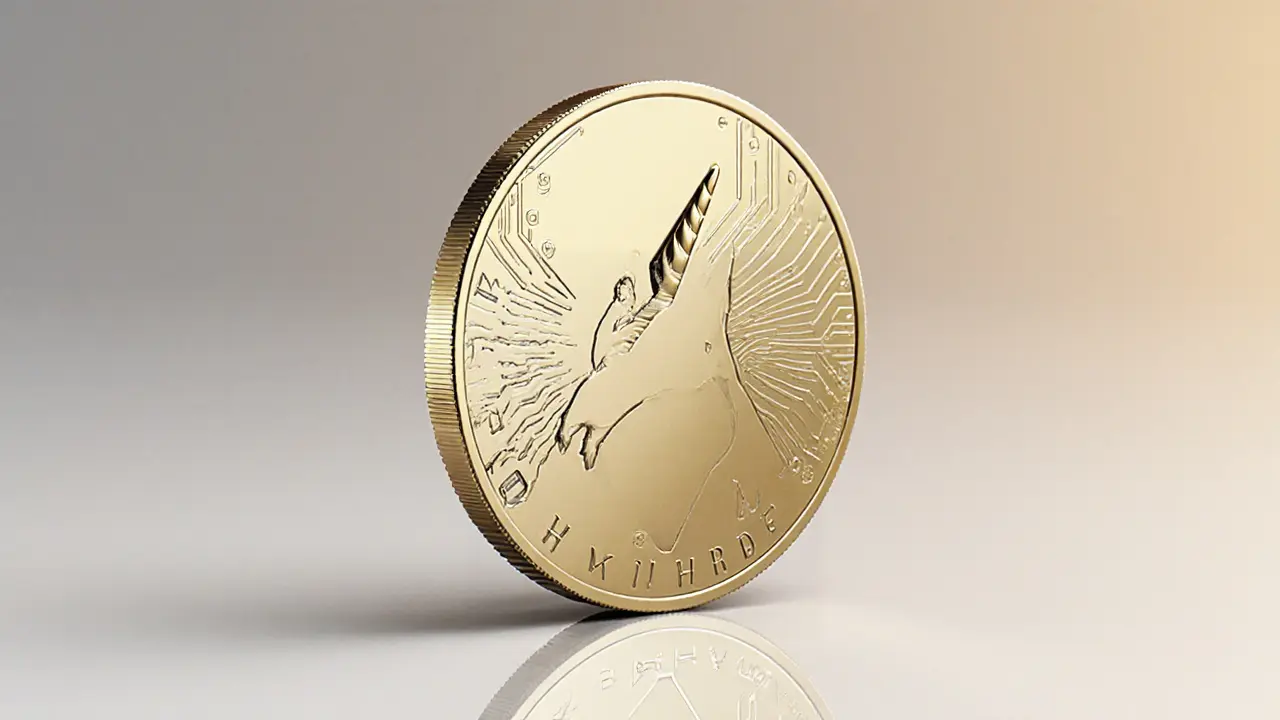Leonicorn Swap Review: In‑Depth Look at the Binance Smart Chain DEX

Leonicorn Swap Feature Comparison Tool
Launch Year: 2021–2022
Native Token: LEOS / LEONS (BEP-20)
Liquidity Pools: ~30 active pairs
Average Trade Fee: $0.01–$0.04
Daily Volume: $0.2–$0.5M
Security Audit: None publicly disclosed
Community Size: ~2,000 members
Liquidity Depth: Moderate
NFT Marketplace: Yes (BEP-721)
Wallet Compatibility: MetaMask, Trust Wallet, Binance Web3 Wallet
| Feature | Leonicorn Swap | PancakeSwap |
|---|---|---|
| Launch Year | 2021–2022 | 2020 |
| Native Token | LEOS / LEONS (BEP-20) | CAKE (BEP-20) |
| Liquidity Pools | ~30 active pairs | 1,200+ pairs |
| Average Trade Fee | $0.01–$0.04 | $0.05–$0.10 |
| Daily Volume (approx.) | $0.2–$0.5M | $1B+ |
| Security Audit | None publicly disclosed | CertiK, PeckShield |
| Community Size (Telegram) | ~2,000 members | 145,000+ members |
Leonicorn Swap offers ultra-low fees and a basic NFT marketplace, making it attractive for small-scale traders. However, it lacks the liquidity depth, security audits, and community size that make PancakeSwap a more robust platform.
Recommendation: Ideal for beginners testing DeFi mechanics or those seeking low-cost trading; best for experienced users to diversify their portfolio.
If you’ve been hunting for a low‑fee DEX on Binance Smart Chain (BSC) that also dabbles in NFTs, you’ve probably stumbled across Leonicorn Swap review in a Reddit thread or a tweet. But does the hype match reality? This article pulls apart the platform’s tech, tokenomics, fees, and community vibe so you can decide whether to lock up your crypto there.
What is Leonicorn Swap?
Leonicorn Swap is a decentralized exchange built on Binance Smart Chain that uses an Automated Market Maker (AMM) model and hosts an NFT marketplace. Launched sometime between 2021 and 2022, the platform is helmed by Mofassair Hossain, a founder and CEO known for raising $600million for over 60 blockchain projects and listed among the top 10 blockchain start‑up marketing advisers in 2018. The DEX’s native token appears under the ticker LEOS (sometimes listed as LEONS on certain exchanges), which powers liquidity incentives and governance.
How the AMM Model Works on Leonicorn Swap
Like most BSC DEXs, Leonicorn Swap relies on an Automated Market Maker (AMM) protocol that creates liquid pools for token pairs. Users supply equal values of two tokens to a pool, earning a share of the transaction fees every time a trader swaps one asset for the other.
The platform also integrates a NFT Marketplace where creators can list BEP‑721 tokens. While the marketplace is functional, it lacks the breadth of OpenSea or the community buzz of PancakeSwap’s NFT hub.
The LEOS Token: Uses and Naming Puzzles
LEOS is a BEP‑20 token that serves three primary functions:
- Liquidity mining rewards for pool providers.
- Governance voting on protocol upgrades.
- Access to exclusive NFT drops and promotional airdrops.
One snag for newcomers is the inconsistent ticker: CoinMarketCap and CryptoRank list the token as LEOS, whereas Kriptomat shows it as LEONS. This branding confusion can trip up wallet displays and exchange searches.

Fees, Speed, and Performance Metrics
Because Leonicorn Swap lives on BSC, transaction confirmation averages about 3seconds per block. Reported fees claim as low as $0.01 per trade, which aligns with BSC’s typical gas cost range of $0.05‑$0.10. In practice, users see fees hovering around $0.02‑$0.04 depending on network congestion.
Liquidity depth is modest. Kriptomat’s recent price snapshot showed a 24‑hour dip of -4.60%, hinting at limited market depth and higher slippage on larger trades. Compared with PancakeSwap’s $1billion‑plus daily volume, Leonicorn Swap’s daily turnover is estimated in the low‑hundreds of thousands of dollars.
Security Landscape
Unfortunately, the platform does not disclose any formal security audit from firms such as CertiK, PeckShield, or Trail of Bits. In the DeFi world, 78% of exploits in 2022 targeted unaudited code (Immunefi report), so the lack of a public audit raises a red flag.
The smart contracts are open‑source on BSCScan, allowing community review, but the absence of a third‑party audit means users must rely on unofficial code reviews and personal risk tolerance.
Comparison with PancakeSwap
| Feature | Leonicorn Swap | PancakeSwap |
|---|---|---|
| Launch Year | 2021‑2022 | 2020 |
| Native Token | LEOS / LEONS (BEP‑20) | CAKE (BEP‑20) |
| Liquidity Pools | ~30 active pairs | 1,200+ pairs |
| Average Trade Fee | $0.01‑$0.04 | $0.05‑$0.10 |
| Daily Volume (approx.) | $0.2‑$0.5M | $1B+ |
| Security Audit | None publicly disclosed | CertiK, PeckShield |
| Community Size (Telegram) | ~2,000 members | 145,000+ members |
In short, PancakeSwap dwarfs Leonicorn Swap in liquidity, token variety, and security credibility. Leonicorn’s niche advantage lies in ultra‑low fees and a bundled NFT marketplace, which might appeal to traders with tiny budgets.

Getting Started: Wallets and Buying LEOS
To trade on Leonicorn Swap you’ll need a Web3‑compatible wallet. The most common choice is MetaMask, which works as a browser extension and mobile app. Trust Wallet and Binance Web3 Wallet also connect without hassle.
- Install MetaMask and create a new wallet or import an existing one.
- Switch the network to Binance Smart Chain (mainnet). Add the BSC RPC details if they don’t appear automatically.
- Fund the wallet with BNB to cover gas fees.
- Visit the official Leonicorn Swap URL (verify the domain via community channels).
- Connect your wallet by clicking “Connect Wallet” and approve the connection.
- To acquire LEOS, you can:
- Buy directly on KuCoin
- Swap BNB for LEOS on the “Swap” tab within Leonicorn Swap (ensure you set slippage tolerance appropriately).
Remember to double‑check the token contract address (0x… placeholder) before any transfer to avoid impostor tokens.
Pros and Cons - Quick Reference
- Pros
- Sub‑dollar transaction fees make micro‑trading viable.
- Integrated NFT marketplace for BEP‑721 assets.
- Simple UI suitable for traders familiar with PancakeSwap.
- Cons
- Limited liquidity leads to higher slippage on sizable trades.
- No publicly available security audit - higher smart‑contract risk.
- Token ticker inconsistency (LEOS vs LEONS) creates confusion.
- Small community reduces support and information flow.
Final Verdict
Leonicorn Swap is a functional BSC DEX that delivers on its promise of cheap trades and a basic NFT shop. However, the platform’s thin liquidity, lack of audit, and fuzzy branding make it a high‑risk choice for large‑scale investors. For hobbyists looking to test AMM mechanics with minimal fees, it can serve as a sandbox. If you need deep liquidity, strong community backing, and audited security, Pivot to PancakeSwap or another established BSC DEX.
Frequently Asked Questions
Is Leonicorn Swap safe to use?
Safety is mixed. The platform has no publicly disclosed third‑party audit, and its smart contracts are open‑source but not formally vetted. Use only funds you can afford to lose and consider spreading risk across multiple DEXs.
How do I connect my wallet?
Install MetaMask (or Trust Wallet), add the Binance Smart Chain network, fund with BNB, go to the official Leonicorn Swap site, and click “Connect Wallet”. Approve the connection in the wallet popup.
What is the fee structure?
Leonicorn Swap charges a flat trade fee that often ends up between $0.01‑$0.04 per swap, thanks to BSC’s low gas costs. Liquidity providers earn a share of these fees.
Can I trade NFTs on Leonicorn Swap?
Yes. The platform hosts a BEP‑721 NFT marketplace where creators list digital collectibles. The selection is modest compared to dedicated NFT hubs.
Where can I buy the LEOS token?
LEOS is listed on KuCoin and can be swapped directly on Leonicorn Swap using BNB. Some guides also mention Binance Web3 Wallet for indirect purchases.

Ben Parker
October 11, 2025 AT 09:14Yo, you’re missing the obvious – the whole LEOS token is just a meme cash‑grab, 🤡 and the fees are only low because the volume is dead. If you dump any decent amount you’ll see slippage that will eat your profits. Also, watch out for fake contracts, many scams mimic LEOS. The NFT marketplace is practically empty, so it’s more hype than utility. Don’t get lured in by the ultra‑low fees; they’re a trap for the unwary.
Daron Stenvold
October 12, 2025 AT 04:41In the grand tapestry of decentralized finance, Leonicorn Swap appears as a fleeting gust of wind-brief, subtle, and barely leaving a trace upon the dunes of liquidity. Its ambition to provide sub‑dollar trades is commendable, yet it teeters on the precipice of obscurity when juxtaposed with the colossus that is PancakeSwap. The absence of a reputable audit casts a looming shadow over its code, inviting whispers of insecurity. While the community may be modest, it lacks the vigor needed to sustain a thriving ecosystem. One must weigh the allure of low fees against the perils of thin order books and potential exploits.
hrishchika Kumar
October 13, 2025 AT 00:08Picture this: a small fish swimming in a crystal‑clear pond, glittering with the promise of cheap trades, yet the pond itself is shallow and the water a tad murky. Leonicorn’s NFT corner feels like a boutique shop tucked in an alley-charming, but you’re unlikely to stumble upon a masterpiece. The token’s dual ticker, LEOS or LEONS, adds a splash of confusion that can trip even seasoned sailors of crypto. Still, for a rookie eager to dip their toes without splashing too much BNB, it’s a decent launchpad. Just keep a watchful eye on the depth of the pools; they can evaporate faster than summer rain.
Nina Hall
October 13, 2025 AT 19:34Hey folks, if you’re looking for a friendly place to test out AMM mechanics without burning a hole in your wallet, Leonicorn Swap could be your sandbox. The UI feels familiar, like a cousin of PancakeSwap, so the learning curve is gentle. Low fees mean you can experiment with tiny amounts, which is perfect for building confidence. The community may not be massive, but they’re supportive and often share tips on navigating the platform. Give it a spin if you’re curious, just remember to stay cautious.
Lena Vega
October 14, 2025 AT 15:01Cheap fees, tiny pool.
Mureil Stueber
October 15, 2025 AT 10:28Leonicorn Swap’s low‑fee model is useful for micro‑trades, but the limited liquidity means larger swaps can suffer from slippage. Without a public audit, it’s wise to allocate only what you can afford to lose. The NFT marketplace is functional yet not very active, so expectations should be modest. Overall, it serves as a niche DEX for beginners or hobbyists exploring BSC.
Emily Kondrk
October 16, 2025 AT 05:54Wake up, sheeple! The so‑called “ultra‑low fees” are just a smokescreen for a platform that hasn’t bothered to get a legit audit. They’re hiding behind the fancy NFT marketplace while the smart contracts sit vulnerable, waiting for the next exploit. Don’t be fooled by the glossy UI – it’s a classic bait‑and‑switch. The token ticker fiasco (LEOS vs LEONS) is a silent red flag that they can’t even keep their own branding straight. If you value your crypto, steer clear.
Laura Myers
October 17, 2025 AT 01:21Alright, let’s cut to the chase. Leonicorn Swap does what it says – cheap trades on BSC – but it’s like a pocket‑knife: handy for small jobs, not meant for heavy lifting. The UI mirrors PancakeSwap, so you won’t get lost, and the NFT section, while modest, adds a fun side‑quest. Just remember the liquidity is thin; you’ll feel the burn on bigger swaps. Use it for testing or tiny positions, then graduate to bigger players when you’re ready.
Leo McCloskey
October 17, 2025 AT 20:48Honestly, this platform is a shadow of the real DeFi giants. The fees are low, yes, but the liquidity is laughably small, making any meaningful trade pointless. No audit? That’s a massive red flag. It feels like a copy‑paste of PancakeSwap’s UI with half the features. If you’re after genuine depth and security, keep looking elsewhere; this is just a gimmick.
arnab nath
October 18, 2025 AT 16:14Leonicorn’s secret sauce? Nothing. It’s just a thin veil of low fees over a platform that’s barely there. The community size hints at the reality – a handful of users testing waters. I’d advise extreme caution.
Nathan Van Myall
October 19, 2025 AT 11:41While the fee structure looks appealing at first glance, the underlying liquidity constraints can dramatically affect trade execution quality, especially for orders beyond modest sizes. Moreover, the platform’s lack of a publicly available security audit raises concerns regarding potential vulnerabilities in its smart contract architecture. Users should consider diversifying across multiple DEXs to mitigate risk exposure inherent to single‑point platforms such as this.
debby martha
October 20, 2025 AT 07:08i think leonicorn is kinda ok for just trying stuff out but dont put alot of money in it its just a small thing
Ted Lucas
October 21, 2025 AT 02:34Let me break this down for you step by step, because clarity is essential when assessing a platform that markets itself on ultra‑low fees but offers a shallow pool of liquidity. First, the fee model: $0.01‑$0.04 per swap is indeed attractive compared to many BSC counterparts, yet fees are only a fraction of the total cost when slippage is factored in. Second, liquidity depth: with roughly thirty active pairs, any sizable order will encounter noticeable price impact, eroding the perceived fee advantage. Third, the token ticker confusion-LEOS versus LEONS-creates unnecessary friction for users checking balances across wallets and exchanges; consistency is key for a trustworthy brand. Fourth, the absence of a third‑party audit is a glaring omission; without CertiK or PeckShield validation, the code remains a black box, leaving users vulnerable to exploits. Fifth, community size: a Telegram group of about two thousand members signals limited peer support and fewer eyes on potential issues. Sixth, the NFT marketplace, while functional, lacks the variety and activity seen on larger platforms, offering modest utility at best. Seventh, the user experience is familiar, mirroring PancakeSwap’s UI, which lowers the onboarding barrier but also suggests a lack of innovation. Eighth, wallet compatibility is solid, supporting MetaMask, Trust Wallet, and Binance Web3, ensuring broad access. Ninth, gas fees on BSC remain low, facilitating cheap transactions, yet network congestion can still cause delays. Tenth, the platform’s roadmap appears sparse, with no clear announcements on upcoming features or security enhancements. Eleventh, developers have not disclosed any bug bounty programs, which could otherwise incentivize community‑driven security improvements. Twelfth, tokenomics for LEOS revolve around liquidity mining and governance, yet the token’s market depth remains thin, limiting price discovery. Thirteenth, swapping BNB for LEOS directly on the platform is straightforward, but users must verify contract addresses diligently to avoid counterfeit tokens. Fourteenth, the platform’s branding and marketing efforts are modest, relying heavily on word‑of‑mouth within niche circles. Lastly, for risk‑averse traders or institutions, the combination of limited liquidity, lack of audit, and small community size makes Leonicorn Swap a high‑risk environment for substantial capital. In summary, while Leonicorn Swap can serve as a sandbox for experimenting with AMM mechanics on a low‑cost basis, it falls short of the standards required for serious trading or long‑term investment strategies.
Orlando Lucas
October 21, 2025 AT 22:01From a philosophical standpoint, the allure of low fees embodies the democratizing spirit of decentralized finance, yet the scarcity of liquidity reveals a paradox: accessibility without depth can undermine the very empowerment it promises. Users must reconcile the tension between cost efficiency and market resilience.
Philip Smart
October 22, 2025 AT 17:28Leonicorn's low-fee claim is a gimmick; the platform doesn't have the depth to support real trading.
Jacob Moore
October 23, 2025 AT 12:54Hey, I get the criticism, but if you’re just testing small swaps, it’s pretty decent. The UI is clean, and the fees are genuinely low. Just keep an eye on slippage, and don’t go big until the pools grow.
Manas Patil
October 24, 2025 AT 08:21From a cultural lens, Leonicorn Swap reflects the burgeoning BSC ecosystem’s drive to offer low‑cost alternatives, yet it also showcases the challenges of scaling community trust without formal audits. The platform’s modest user base can be both a strength-tight‑knit collaboration-and a weakness, limiting diverse feedback loops.
Annie McCullough
October 25, 2025 AT 03:48Sure, low fees are nice but everyone’s already on PancakeSwap, so why bother? 🤷♀️
Carol Fisher
October 25, 2025 AT 23:14Patriots of finance, unite! Our money belongs on platforms built by true innovators, not on foreign‑run DEXes that hide their code. Leonicorn is a step forward for sovereign crypto!
Melanie Birt
October 26, 2025 AT 18:41Quick tip: always verify the LEOS contract address before swapping. It prevents you from falling for spoof tokens that look identical in explorers.
Lady Celeste
October 27, 2025 AT 14:08Leonicorn is a dead‑end.
Ethan Chambers
October 28, 2025 AT 09:34One must consider the ontological implications of a DEX that markets itself on fee minimalism whilst neglecting the epistemic rigor of audited code. Such contradictions are emblematic of a broader malaise in the DeFi sphere.
Siddharth Murugesan
October 29, 2025 AT 05:01Leonicorn is probably a front for some hidden agenda, maybe even a money‑laundering hub. The lack of audits isn’t an accident.
Hanna Regehr
October 30, 2025 AT 00:28Feeling pumped about trying out a new DEX? Leonicorn’s low fees can be a great playground, just stay mindful of the thin liquidity and keep your exposure small. Happy swapping!
Anjali Govind
October 30, 2025 AT 19:54Just wanted to say that exploring different platforms like this helps the whole community learn and grow together. It’s cool to see people sharing insights.
Sanjay Lago
October 31, 2025 AT 15:21Hey guys, if you’re curious, give Leonicorn a try with a tiny amount, see how the fee feels, and then decide if you want to go bigger. It’s all about learning step by step.